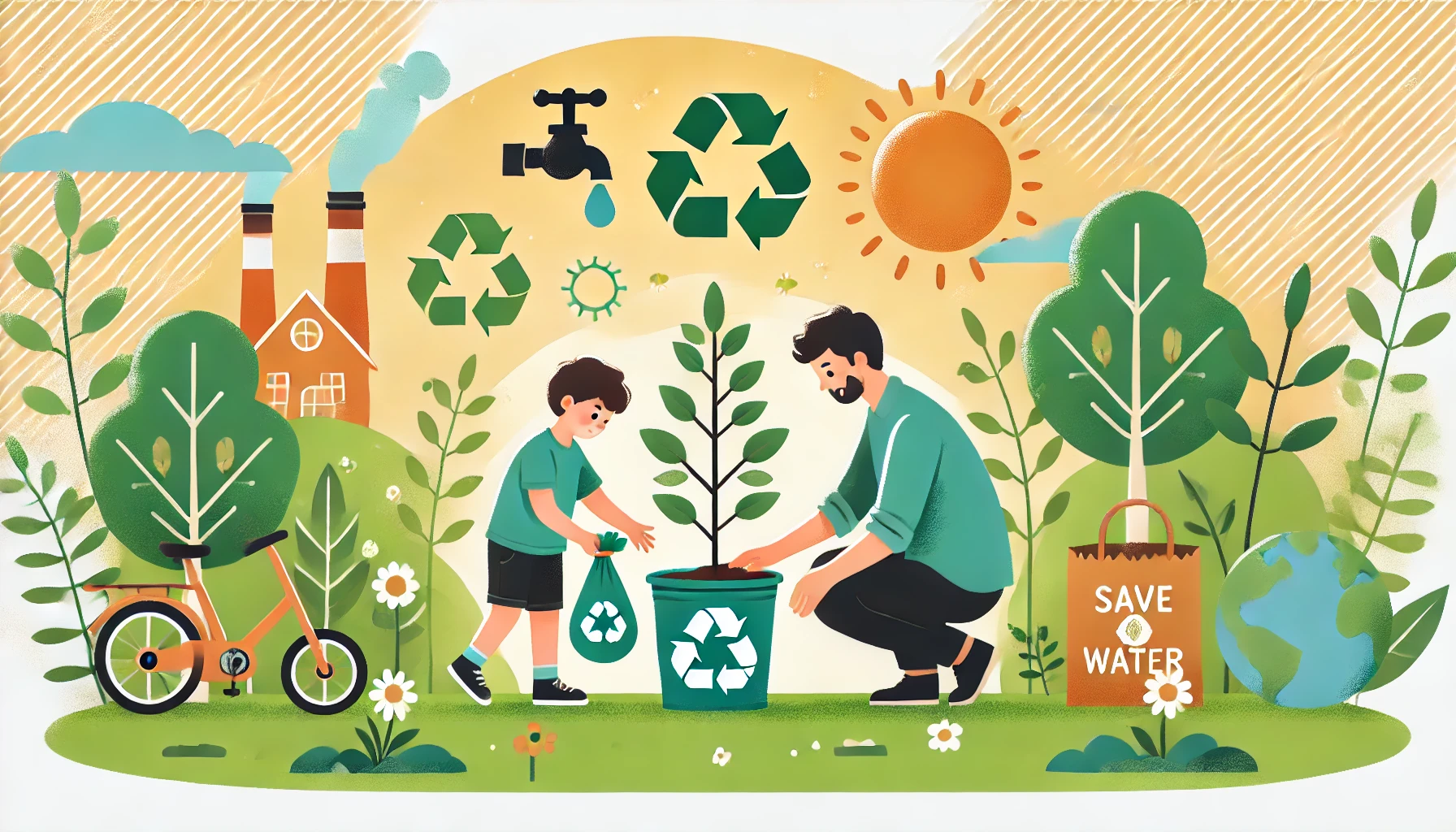How to Teach Young Children About Taking Care of the Environment
Teaching young children about caring for the environment helps them develop a sense of responsibility, respect for nature, and sustainable habits. When kids learn to reduce waste, conserve resources, and appreciate the natural world, they become more mindful of their impact on the planet. Parents can encourage environmental awareness through simple, hands-on activities and everyday habits. In this article, we’ll explore practical ways to help children learn how to take care of the environment.
Why Teaching Environmental Responsibility is Important
- Encourages respect for nature – Helps children appreciate the beauty of the world around them.
- Builds lifelong eco-friendly habits – Teaches kids how small actions make a big difference.
- Develops responsibility and awareness – Helps children understand their role in protecting the planet.
- Reduces waste and conserves resources – Teaches the importance of sustainability.
- Inspires future environmental action – Encourages children to be mindful and proactive.
1. Teach Kids to Reduce, Reuse, and Recycle
Helping children understand how to manage waste responsibly builds eco-friendly habits.
Activity Idea:
- Set up color-coded recycling bins and teach kids which items go where.
- Use reusable bags, water bottles, and lunch containers instead of disposable ones.
- Make a craft project using recycled materials, like turning old boxes into toy houses.
What Kids Learn:
- How to reduce waste by reusing materials
- The importance of recycling for the environment
- That small daily actions help keep the planet clean
2. Encourage Outdoor Exploration and Nature Appreciation
Spending time in nature helps children develop a connection to the environment.
Activity Idea:
- Go on nature walks and observe plants, insects, and animals.
- Start a family garden, where kids help plant and care for vegetables or flowers.
- Collect leaves, rocks, or pinecones for nature-inspired art projects.
What Kids Learn:
- That nature is beautiful and worth protecting
- How plants and animals are connected to the environment
- The importance of spending time outdoors
3. Teach Children to Save Water and Energy
Simple habits can help children learn how to conserve resources.
Activity Idea:
- Show how to turn off the tap while brushing teeth to save water.
- Play a “lights off” game, where kids turn off unused lights and appliances.
- Teach kids to unplug devices when they’re not in use.
What Kids Learn:
- How small actions can reduce water and energy waste
- That conserving resources helps the planet
- The importance of being mindful of daily habits
4. Explain the Importance of Protecting Animals and Their Habitats
Helping kids understand how human actions affect wildlife builds compassion.
Activity Idea:
- Watch documentaries or read books about endangered animals.
- Visit a local nature reserve or zoo to learn about conservation efforts.
- Avoid using plastic straws and discuss how they can harm ocean life.
What Kids Learn:
- That animals need clean and safe environments to survive
- How pollution and deforestation affect wildlife
- Ways to protect animals by making eco-friendly choices
5. Show Kids How to Plant and Care for Trees and Plants
Gardening teaches children about nature and the importance of trees in the environment.
Activity Idea:
- Plant a tree or flower in the backyard or a pot indoors.
- Teach kids how to water and care for plants regularly.
- Discuss how trees provide oxygen, shade, and homes for animals.
What Kids Learn:
- The role of plants in keeping the Earth healthy
- How to care for living things
- The importance of planting trees for the future
6. Encourage Eco-Friendly Transportation and Walking
Teaching kids to walk, bike, or use public transport helps reduce pollution.
Activity Idea:
- Walk or bike to school or the park instead of driving when possible.
- Teach kids about carpooling and public transportation.
- Make a game of counting electric cars or bikes on the road.
What Kids Learn:
- That cars and pollution impact the environment
- How alternative transportation helps reduce carbon emissions
- The benefits of walking and biking for health and the planet
7. Pick Up Litter and Keep Spaces Clean
Teaching kids to clean up their surroundings helps them take ownership of their environment.
Activity Idea:
- Do a neighborhood or park cleanup day with gloves and trash bags.
- Explain how litter affects animals and plants.
- Show kids how to properly dispose of waste in the right bins.
What Kids Learn:
- That keeping the environment clean is a shared responsibility
- How litter harms nature and wildlife
- The importance of disposing of trash properly
8. Praise and Encourage Eco-Friendly Behavior
Recognizing children’s efforts to care for the environment reinforces positive habits.
Activity Idea:
- Say, “I love how you remembered to turn off the lights—great job saving energy!”
- Create a “Green Star Chart” where kids earn stars for eco-friendly actions.
- Ask, “How do you feel knowing you helped the Earth today?”
What Kids Learn:
- That small efforts make a difference
- How to take pride in protecting the environment
- The motivation to continue making eco-friendly choices
Final Thoughts
Teaching young children about taking care of the environment helps them develop lifelong habits of sustainability, responsibility, and appreciation for nature. By encouraging recycling, conservation, and outdoor exploration, parents can guide children toward making choices that protect the planet for future generations.
